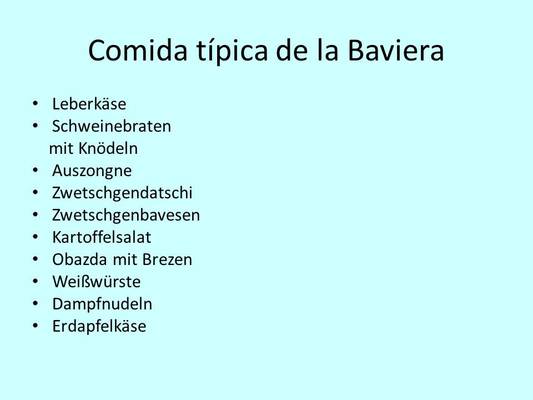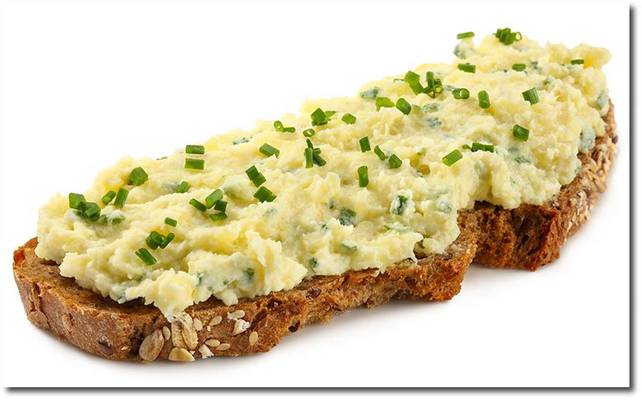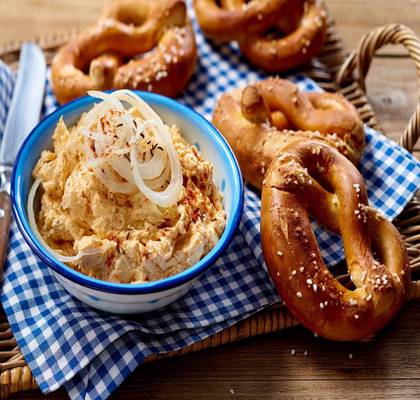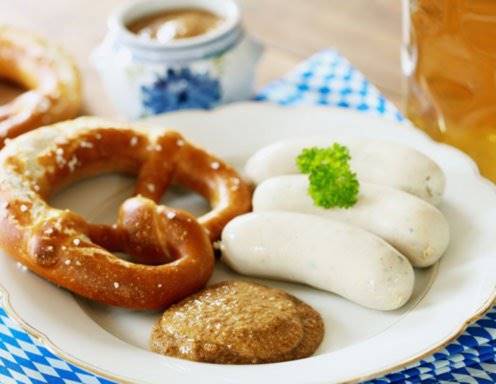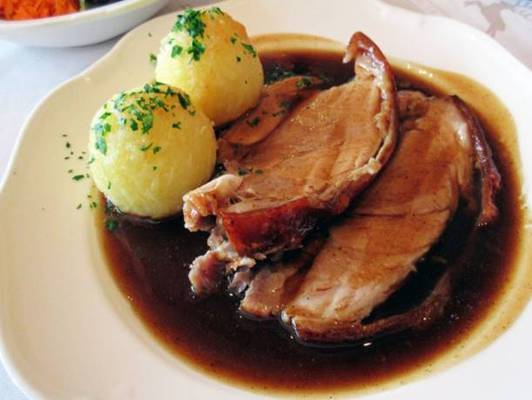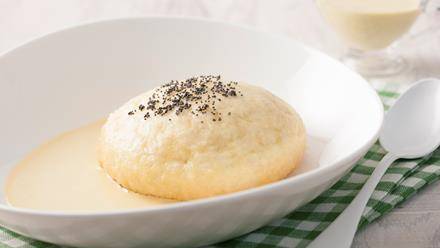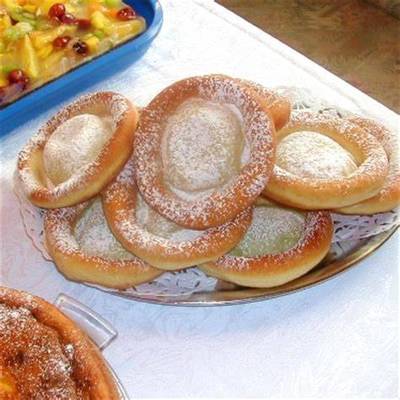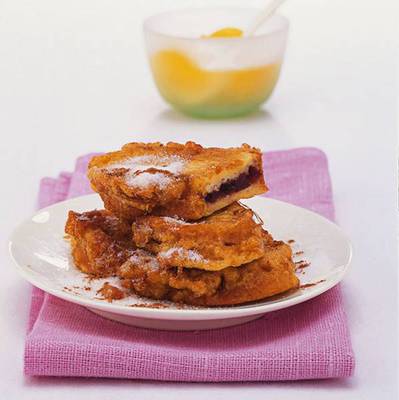IV Liceum Ogólnokształcące im. Mikołaja Kopernika w Rzeszowi
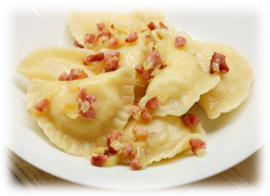
Traditional Polish Dish – Pierogi
En la cocina polaca pierogui son considerados el plato nacional. Pierogui son una especie de ravioli o empanadillas. Se sirven en muchos festivales, desempeñando un papel importante como un plato cultural. Se componen de harina, huevos, agua tibia, aceite y pizca de sal. La masa se enrolla plana y luego se corta en círculos, la masa debe ser muy flexible. Puede llenarlo por relleno dulce o salado y cocinarlo en agua hirviendo, asarlo o freírlo.
In Polish cuisine pierogi are considered to be the national dish. They are served at many festivals, playing an important role as a cultural dish. They are made up from flour, eggs, warm water, oil and pinch of salt. The dough is rolled flat and then cut into circles, the dough has to be very flexible. You can fill it by sweet or savory filling and cook it in boiling water, grill it or fry.
Vasil Levski Comprehensive School
Cocina búlgara
Las tradiciones son aquellas habilidades valiosas que reservamos y pasamos a las próximas generaciones. En general, cuando hablamos de "cocina búlgara", nos referimos a las comidas e ingredientes que son una parte importante de las tradiciones búlgaras.
Para los búlgaros el pan se llama "la base de la vida". Era la parte principal de cada comida y se horneaba en cada casa. Hay una historia que dice: el pan tiene un "alma" y no debe cortarse, debe romperse en pedazos. Para celebraciones, los búlgaros suelen hacer pan y servirlo a sus invitados con miel o sal.
Gracias a nuestra favorable ubicación geográfica y clima, nuestro país está lleno de frutas frescas, verduras, carne, aves y productos lácteos. Durante todo el año hay muchos días festivos y para cada uno tenemos comidas especiales. Cada uno de ellos tiene una forma especial de preparar y, gracias a nuestras madres y abuelas, podemos cocinar las comidas hoy en día.
Como en cualquier otro país, las comidas búlgaras se ven afectadas por personas con diferentes culturas que han habitado nuestras tierras. Así que nuestra cocina es similar a la de nuestros países vecinos.
Cuando hablamos de comida tradicional búlgara en nuestras mentes de inmediato aparece banitsa. Existen diferentes tipos y puede ser salado o dulce. Cuando se trata de rellenar puede ser con calabaza, col, arroz, papas, carne y espinacas. La más extendida es la de queso y huevos. Se ha convertido en el símbolo de la cocina tradicional búlgara.
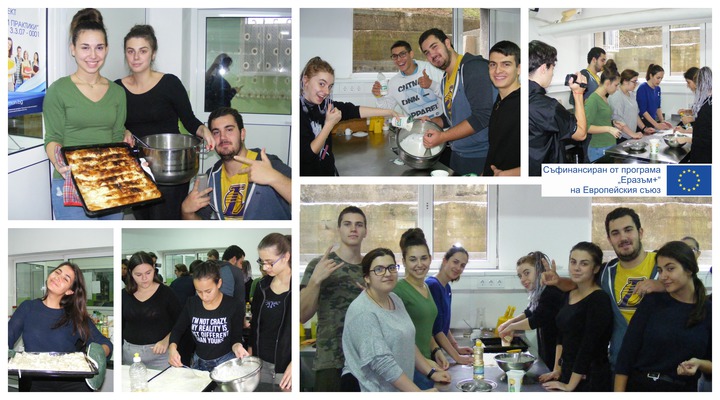
Bulgarian Cuisine-EN
Bulgarian Cuisine-BG
Bulgarian banitsa
Bulgarian banitsa is a specialty that is traditionally eaten for breakfast, although I have eaten mine for lunch with a green salad. It is also traditionally served during Christmas dinner. On that occasion, a coin is hidden ensuring a prosperous year for the one who finds it.
The original recipe is prepared with cheese, but there are many variations with spinach, squash, pumpkin, cabbage or meat.
Ingredients
12 sheets phyllo dough
8 tablespoons butter
½ lb sirene (Bulgarian cheese) or feta, coarsely crumbled
¾ lb Bulgarian yogurt (preferably sheep's milk yogurt)
4 whole eggs
1 egg yolk
Instructions
Whisk yogurt with 4 whole eggs.
Add cheese, salt and pepper and mix.
Melt the butter.
Take two sheets of phyllo and brush the top sheet with melted butter.
Superimpose a third sheet on the first two and brush the top with butter.
Turn the three sheets over and then brush the non coated side.
Divide ¼ of the yogurt, egg and cheese mixture on top of the filo sheets.
Then roll the whole preparation like a long sausage. Roll lengthwise to get the roll as long as possible.
Repeat this process 3 more times to get 4 long rolls of three superimposed sheets of filo each.
Place the springform pan on a baking sheet (or just circle on baking sheet covered with parchment paper).
Begin by placing the first roll by sticking to the edge of the circle, then add the following forming a snail to the center.
Beat egg yolk with the remaining melted butter and brush the whole banitsa.
Bake at 400 F for about 25 minutes.
The banitsa should be golden. It can be eaten either hot, warm or cold.

Agrupamento de Escolas de Barcelos- Portugal
Roasted Rooster
The intense flavour of the stuffing with sausage, liver and bacon retrieves the symbolism of
an iconic legend.
1 rooster of the field (2 kg) with the giblets
1 kg of small round potatoes
1 small meat sausage
100 g of bacon
250 g bread crumbs
1 dl of milk
2 large onions
1 head of garlic
3 large tomatoes
0.5 l of vinho verde (green whine)
1 sprig of rosemary
1 branch of parsley
The night before, crush the cloves of garlic, chop the rosemary leaves and mix them with a handful of salt, 2 tablespoons of olive oil and 1 dl of vinho verde. Season the rooster barring it from the outside with this paste. Let it stand in the fridge for 24 hours.
The next day, bake the giblets of the rooster in salted water, remove the meat from the wings and neck and mash it, along with the gizzard, liver, sausage and bacon.
Chop an onion and brown it in a casserole with olive oil. Add what you have prepared earlier, and add the bread crumb dissolved in milk, stirring well. Fill the bump with this paste and sew the opening with kitchen yarn.
On a tray, pour olive oil, the remaining wine, an onion cut into slices, the tomato without skins or seeds and cut into pieces and parsley. Spread some salt crystals. Put the rooster on a tray and let it stand for 2 hours, turning it occasionally to soak in the smells.
Wash the potatoes, without peeling them, dry them, season them with some salt and
distribute them around the tray.
Bake in the oven, preheated to 180° c. It should be roasted on low heat for 90 minutes, turning the rooster every now and then to brown evenly. Accompany the dish with spring greens sautéed in olive oil and garlic.
* from Internet
Galo assado1.docx
Galo assado - tadução.doc
Comida tradicional de Baviera /Alemania
